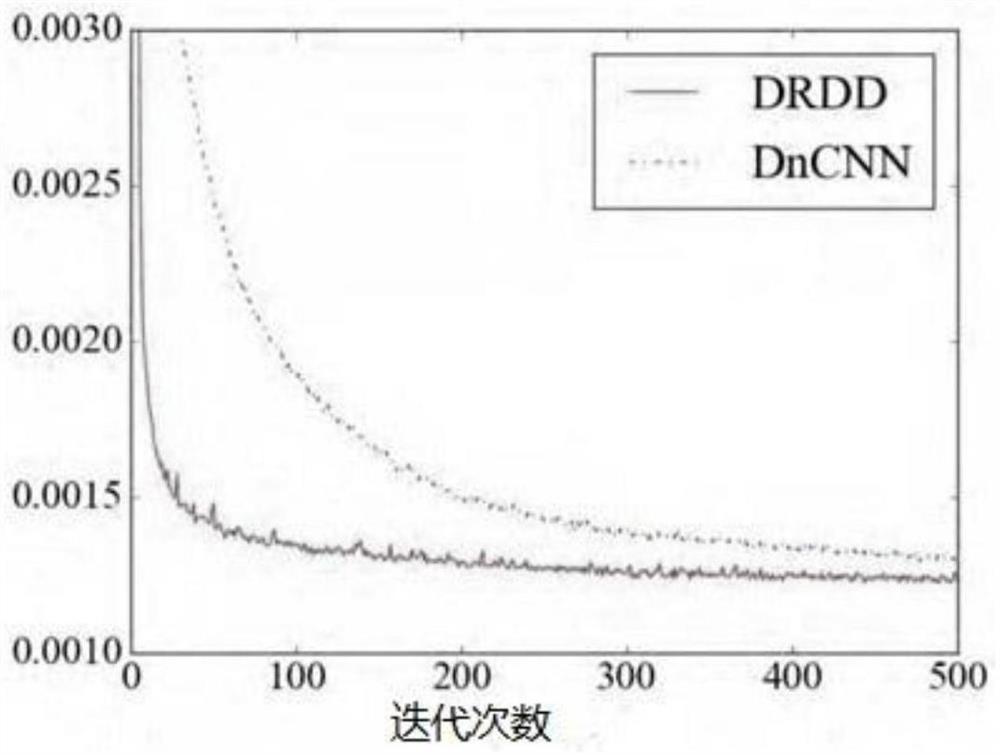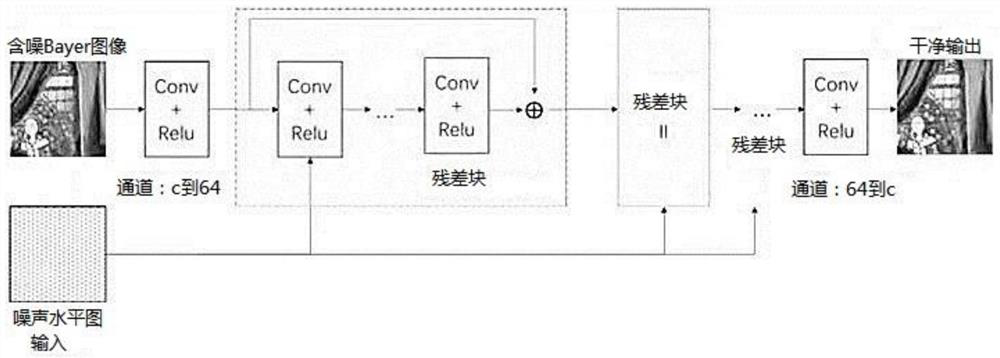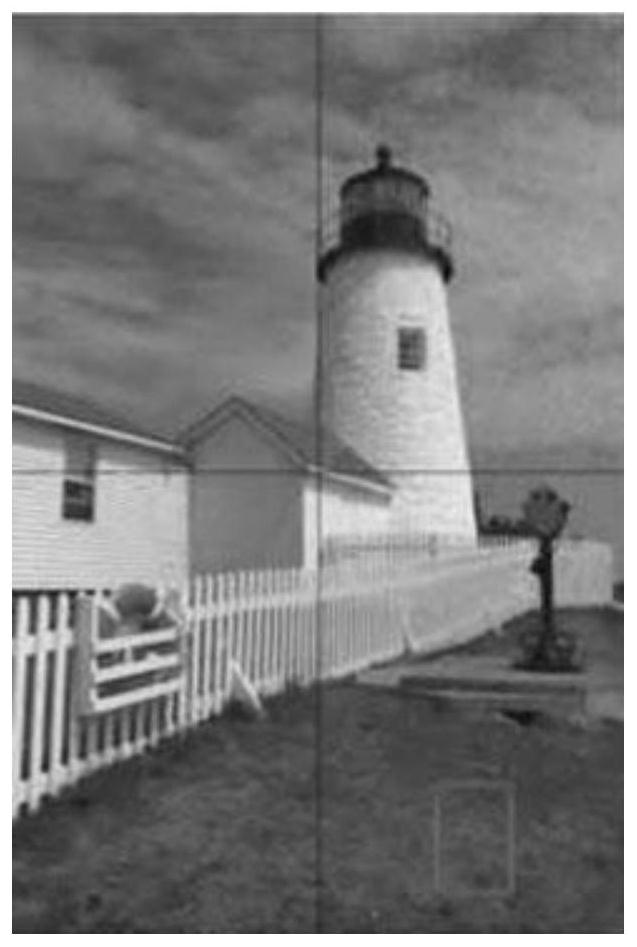Image denoising method based on deep convolutional network
A deep convolution, image technology, applied in image enhancement, image analysis, image data processing and other directions, can solve problems such as slow convergence speed, inability to flexibly handle noise, etc., to achieve improved image denoising performance, fast operation speed, and improved performance Effect
- Summary
- Abstract
- Description
- Claims
- Application Information
AI Technical Summary
Problems solved by technology
Method used
Image
Examples
Embodiment 1
[0052] 1. Formal modeling of the problem
[0053] Denote the column-first expansion vector of the Bayer image as b∈R n , the red, green, and blue channels of the corresponding linear RGB image are expanded in the same way and the three vectors are r, g, b∈R n . And the linear RGB image vector formed by the connection of three channel vectors is The image degradation model is
[0054] b=H(x)=Ax+η (1)
[0055] where A∈R n×3n is the color filter matrix, which simulates the process of color filter formation mosaic through matrix multiplication, and samples the linear RGB image x into a Bayer image b; η∈R n is the noise vector.
[0056] When solving the problem of joint demosaicing and denoising, the present invention directly learns from the data set {(x i ,b i )|i=1,...,m} Construct a mapping F(b; θ) composed of parameter models, such that
[0057]
[0058] where θ is the set of model parameters. When we have texture-rich and noise-free image x i , data set {(x i ...
Embodiment 2
[0093] Embodiment 1 studies the method of jointly demosaicing and denoising Raw images by using a deep convolutional network. This embodiment extends this method to the denoising problem of RGB images. This method is originally suitable for non-blind denoising conditions, which require an input noise level. In view of this problem, this embodiment improves the model so that it can solve the problem of blind denoising, so that only the noise image needs to be input during denoising, and the noise level does not need to be input.
[0094] RGB images are divided into linear RGB images and sRGB images. The difference between them is that the color and brightness processing processes are different, resulting in different distribution of noise. The problem modeling and method description in this embodiment do not involve specific noise distribution, and the quantitative experiment of Gaussian noise is mainly used in the experiment, supplemented by real sRGB, so there is no need to ...
PUM
 Login to View More
Login to View More Abstract
Description
Claims
Application Information
 Login to View More
Login to View More - R&D
- Intellectual Property
- Life Sciences
- Materials
- Tech Scout
- Unparalleled Data Quality
- Higher Quality Content
- 60% Fewer Hallucinations
Browse by: Latest US Patents, China's latest patents, Technical Efficacy Thesaurus, Application Domain, Technology Topic, Popular Technical Reports.
© 2025 PatSnap. All rights reserved.Legal|Privacy policy|Modern Slavery Act Transparency Statement|Sitemap|About US| Contact US: help@patsnap.com



